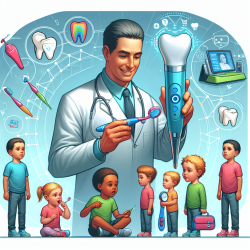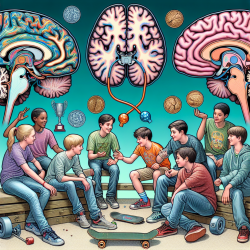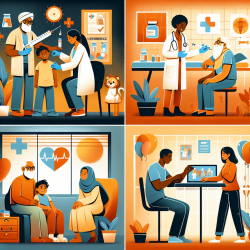Introduction
Neurofibromatosis type 1 (NF1) is a prevalent genetic disorder, characterized by a range of craniofacial and oral alterations. These changes can significantly impact the quality of life, particularly in children. The recent study titled "Craniofacial and Oral Alterations in Patients with Neurofibromatosis 1" provides critical insights that can aid practitioners in improving therapeutic strategies. This blog aims to distill these findings into actionable insights for speech-language pathologists and other practitioners working with NF1 patients.
Key Findings from the Study
The study conducted at the University of Turku and Turku University Hospital examined 110 NF1 patients and revealed several important findings:
- Mandibular Canal Enlargement: This was identified as the most common abnormality, yet it typically does not require treatment.
- Dental Caries: Contrary to previous beliefs, NF1 patients showed a lower incidence of dental caries compared to the general population.
- Periapical Cemental Dysplasia: Found predominantly in females, this condition does not necessitate treatment but requires accurate diagnosis to avoid unnecessary interventions.
- Speech Deviations: The study found that 94% of participants exhibited speech alterations, highlighting the need for specialized speech therapy.
Implications for Practitioners
These findings have several implications for practitioners:
- Avoid Unnecessary Treatments: Understanding that certain craniofacial alterations like mandibular canal enlargement and periapical cemental dysplasia do not require intervention can prevent unnecessary procedures.
- Focus on Oral Hygiene: Despite lower caries rates, maintaining strict oral hygiene is crucial, especially given the potential for motoric clumsiness in NF1 patients.
- Speech Therapy: Given the high prevalence of speech deviations, early and tailored speech therapy interventions are essential for improving communication skills in NF1 patients.
Encouraging Further Research
While this study provides valuable insights, it also highlights the need for further research. Understanding the genetic and environmental factors contributing to these alterations can lead to more effective treatments. Practitioners are encouraged to stay informed about ongoing research and consider participating in studies to contribute to the growing body of knowledge.
Conclusion
Practitioners working with NF1 patients should leverage these findings to enhance their therapeutic approaches. By focusing on accurate diagnosis, preventive care, and specialized speech therapy, practitioners can significantly improve outcomes for children with NF1.
To read the original research paper, please follow this link: Craniofacial and oral alterations in patients with Neurofibromatosis 1.










